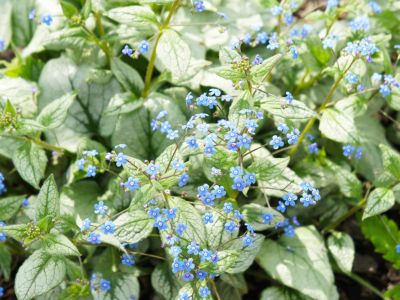About Brunnera Plants
The light blue blooms of brunnera plants rise above the leaves of various cultivars. Brunnera plants have leaves that are glossy green or in variegated hues of gray, silver, or white, such as the popular cultivar ‘Jack Frost’. Brunnera Siberian bugloss blooms in early to mid-spring. When growing brunnera, locate the plant in part to full shade, and in well-drained soil that can be kept consistently and lightly moist. Brunnera plants don’t do well in soil that dries out, nor will they flourish in soggy soil. Plant care for Brunnera macrophylla will include watering to maintain soil moisture and providing good drainage to assure that roots of brunnera plants do not sit in soggy soil. Growing brunnera reaches 1 ½ feet (0.5 m.) in height and 2 feet (0.5 m.) across and grows in a small mound.
How to Plant Brunnera
Brunnera blooms may self-seed and readily sprout from seeds dropped the previous year. If so, dig small seedlings and replant them into areas where more growing brunnera is desired. You may also collect seeds from brunnera plants and replant them or plant newly purchased seeds or small plants. Division of existing plants is another means of propagation. The plant easily thrives in USDA Hardiness zones 3-8, when conditions are right. Brunnera plants prefer rich soil. When growing brunnera in the hottest zones, avoid planting where it gets hot afternoon sun. Brunnera, especially the ones with variegated leaves, are sensitive to the sun and may burn. Now that you’ve learned how to plant brunnera and a little about plant care for Brunnera macrophylla, try it in the shady garden or use it to help naturalize a wooded area. You’ll find this easy-care plant is an asset to any shady area.
